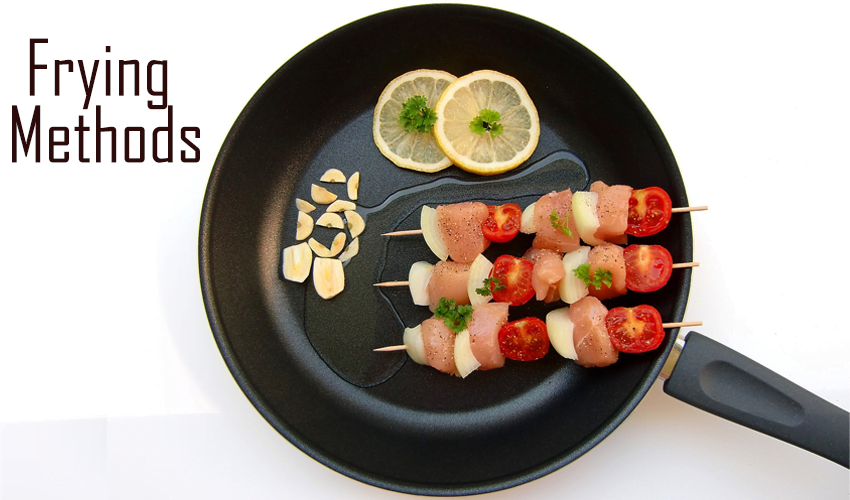
06 Apr Learn All About Frying
From the potato fries to chips to chicken or fish as well as the Pakoras and Doughnuts are all good items that most people find hard to resist. Now, if you love these food items, then you have heard of Frying, the most common method of cooking food. Frying is the process of cooking food items in oil or other fat items, in a frying pan. During the process, pan-fried food items are normally turned over, once or twice with the help of tongs or a spatula. Now the frying methods are varied, each of which might need a different quantity of fat, different vessels, time taken to cook and more. Meanwhile, belief is that the Cooking Method, Frying was first used in the Ancient Egyptian Kitchen during the Old Kingdom, around 2500 BCE. Read our article to learn all about frying.
Types of Frying
Now, the types of frying mainly include sautéing, stir-frying, pan-frying, shallow frying, and deep-frying.
Sautéing: Sautéing means frying with just a little bit of fat in a pan. Normally, onions are sautéed to make it brown. In sautéing food, items are kept in a pan of little oil or fat, once it is already hot. Ingredients and tossed and turned while cooking.
Pan-Frying: This method of cooking is known as the English equivalent of sautéing, which is a French word.
Stir-Frying: This method requires you to cook in high temperatures and to keep stirring the vegetable.
Shallow Frying: This method involves either a shallow amount of oil or no oil. In this technique, the food item is only tossed once or twice during the entire cooking process.
Deep Frying: Fully immersing the food in the oil or fat used to cook food. Since it does not involve cooking in water; it is knows as dry cooking method.
How Does The Process Work?
The process of heat transference remains the same throughout all frying techniques, despite the varieties of oil, heat or vessels used. When you put any food item in hot oil, its surface dehydrates. At the same time, through another series of Millard Reactions, the sugar and protein in these food items break down to create complex flavour and golden brown colour. The main key to frying is to maintain accurate oil temperature. If the temperature is too low, the crust over the food item that normally inhibits oil absorption develops slowly, thus making the food greasier, as it absorbs more oil. Besides, if the oil is too hot, the food is will burn before it cooks through thoroughly.
Tips for Frying
- Cut the food items into equal bite-sized pieces as then they will cook evenly through
- If you have coated any food with bread crumbs, it is better to leave it aside on the rack for 30 minutes before frying, so that the coating dries up adheres
- Use deep pots with a third of half-filled pots to deep fry
- Fry in batches of a small amount, so that oil temperature does not drop too low
- Never leave the oil unattended on the stove as the oil could heat up too much and lead to fire risk


No Comments